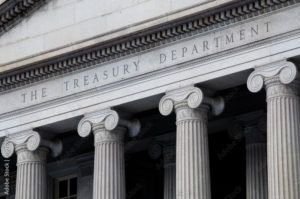A report compiled by the US Treasury Department highlights some of the art world’s most significant flaws exploited by criminals. Congress initially commissioned the report as part of anti-money laundering legislation from 2020. It states, “the high-dollar values of single transactions, the ease of transportability of works of art, the long-standing culture of privacy in the market […], and the increasing use of art as an investment or financial asset” as the elements of the industry that make financial crimes easier. Furthermore, larger galleries, museums, and auction houses are more prone to facilitating illegal activity. The report also acknowledges the new risks introduced by the growing online art market, which nearly doubled in size over the past year. Namely, the report lists the online market’s decentralized and heterogeneous nature as factors that allow money launderers to operate.
However, despite the forty-page report detailing all the issues facing the art world, the Treasury recommends that government action is not immediately necessary. According to the ironically named Scott Rembrandt, a senior official in the Treasury’s Office of Terrorist Financing and Financial Crimes, the government would focus instead on some of the underlying problems that allow illegal practices in the art world and beyond. These include the use of shell companies and the protected use of anonymity among buyers. But some have recommended that American laws governing the art world fall in line with those already in place in Britain and Europe. These reforms include a database to be created and used by dealers, auction houses, museums, and galleries to keep tabs on the more sketchy clients. This would, hopefully, encourage transparency without direct government regulation.
In the United States, antiquities dealers must perform background checks on their clients and report suspicious activity to ensure that any money and goods used in a transaction were acquired legally. However, this requirement has not been extended to art dealers and auction houses. In recent years, many galleries and auctioneers have voluntarily enacted their own rules regarding the due diligence that their employees must exercise. But so far, it is not legally required. The Art Dealers Association of America released a response to the report, agreeing with its conclusions: “There is not evidence of sufficient money laundering risk in the art market to justify subjecting art dealers to new regulations”. Not exactly a surprising response. This comes at a time when exposing looted artifacts and paintings bought with dirty money have become a fixture of our news cycle, from Jho Low to Michael Steinhardt.
US Treasury Report: Nothing To See Here, FolksFebruary 10, 2022
|
MORE ARTICLES |

